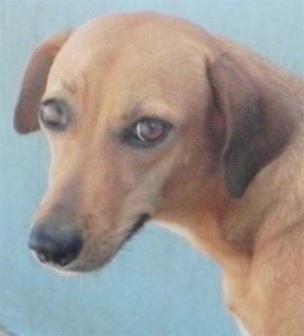General comments
As we introduced this new topic last week, we mentioned that the blood circulatory system comprises the blood itself (red cells, white cells, platelets, liquid plasma, dissolved nutrients, waste products), the heart, which pumps the blood throughout the body, and the blood vessels (arteries, veins, and capillaries) through which the blood flows.
The function of the blood is (1) to supply the cells of all the body organs with water, electrolytes, oxygen, nutrients and hormones, (2) to remove waste products and (3) to defend the body against invading attackers (bacteria, viruses, etc).

The heart is really a pump made up of specialized muscle tissue. In mammals, (dogs, cats, etc) it has four chambers. The two sides of the heart are separated by a strong muscular wall. In the normal heart, blood cannot get from one side to the other without first going through the general circulation or the pulmonary (lung) circulation. The cardiac (heart) system has four valves, the function of which is to ensure that the blood flows in one direction only and does not flow backwards. If the function of the valves (for whatever reason) becomes compromised, blood can leak backwards creating great problems.
Blood is pumped by the contraction of the heart muscle into the arteries. The arteries begin with a large diameter and then get progressively smaller until they become tiny capillaries in the organs. The blood is then conducted back towards the heart via veins which increase in calibre as they get closer to the heart.

From the right side bottom chamber the blood is pumped into the (pulmonary) artery which leads the blood towards the lung. This artery branches into smaller blood vessels and finally into capillaries (around the air sacs of the lungs), where gas exchange occurs – carbon dioxide (being expelled) for oxygen (being inhaled).
The heartbeat is controlled by its own internal nervous system. The strength and rate of the heartbeat is also influenced by outside nervous and hormonal factors. For example, the rate will increase if the dog exercises, becomes excited, runs a fever, is overheated, is in shock – or in any circumstance in which more blood-flow to the tissues is needed.
Heart rhythms follow a fixed pattern. Whether the heart beats fast or slow, the sequence in which the various muscle fibres contract remains the same. This sequence causes a synchronized beat, allowing both ventricles (the lower chambers) to empty at the same time. Heart disease can upset this normal pattern, causing a disturbed rhythm.
The arteries and veins also are under nervous and hormonal influences. They can expand or contract to maintain a correct blood pressure.
There are outward physical signs which help to determine if a dog’s heart and circulation are working properly. It may be worth your while to familiarize yourself with the normal findings, so that you can recognize abnormal signs if they appear. We will mention some of these physical signs next week. Also, we will continue with other aspects of the heart function, trying to establish the understanding of how the circulatory system functions and what is normal.
I am a bit worried that some of the material presented today might seem a bit too technical. I am trying to simplify the process of blood circulation, an understanding of which is important, if we are to follow how blood circulatory problems emerge. So bear with me this week and next week.
Please implement disease preventative measures (vaccinations, routine dewormings, monthly anti-heartworm medication, etc) and adopt-a-pet from the GSPCA’s Animal Clinic and Shelter at Robb Street and Orange Walk, if you have the wherewithal to care well for the animals. Do not stray your unwanted pets, take them to the GSPCA’s Clinic and Shelter instead. If you do not wish your pet to have puppies or kittens, you may exploit the GSPCA’s free spay and neutering programme. If you see anyone being cruel to an animal, or if you need any technical information, please get in touch with the Clinic and Shelter by calling 226-4237.




